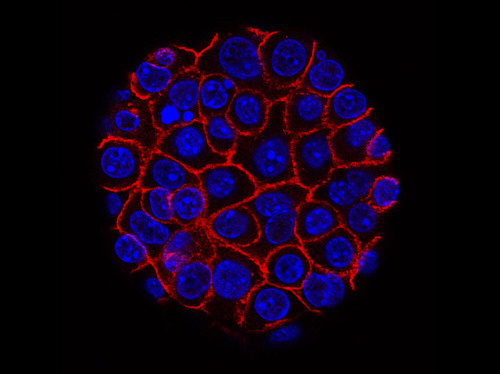
Improving Imitation
Whether studying the biology of cancer, or testing drugs designed to destroy it, a researcher’s initial analyses are likely to be carried out on cancer cells in a dish. But because simple cell cultures are limited in their likeness to real tumours, there are ongoing efforts to improve them. Recently, for example, scientists developed mini tumours – cancer cells grown as 3D blobs or balls, (like the pancreatic cancer cells pictured) – which provide a more accurate representation of the natural tumour microenvironment. Now, they’re tackling culture media. Standard growth medium doesn’t closely match the body’s natural tissue fluids and may therefore influence the behaviour and drug response of cultured cells in unrealistic ways. By analysing the components of fluids from various human tissues and tumours, and creating culture media recipes to match, researchers hope to create the most life-like cultured tumours yet and therefore generate the most meaningful results.
Written by Ruth Williams
- Image by Min Yu, Eli and Edythe Broad Center for Regenerative Medicine and Stem Cell Research at USC
- Research from Massachusetts Institute of Technology, MA, and University of Chicago, IL, USA
- Image originally published under a Creative Commons Licence (BY-NC-ND 4.0)
- Research published in eLife, April 2019
You can also follow BPoD on Instagram, Twitter and Facebook
Archive link




Комментариев нет:
Отправить комментарий